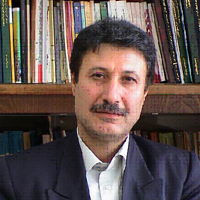Analysis of the shortcomings of the spatial planning system in Iran
History has repeatedly shown that social inequality ends up weakening the strongest democracies. Currently, there are regional imbalances, air pollution in big cities and excessive destruction of the environment, changes in land use, increase in crimes and anomalies, the vulnerability of the security of marginal areas and economic and social inequalities, existing inequalities on the level Livelihoods in different regions and the separation of cities and villages, the concentration of capital in an unbalanced way in regions and big cities, etc., are currently more than ever, which indicates many problems that have arisen in the functioning of the planning system and the system. It has challenged spatial planning. This article analyzes the shortcomings of the spatial planning system in Iran. The current research is based on the purpose of basic and applied research and in terms of the exploratory method. The findings of the research indicate the classification of 117 inefficiencies in 3 categories: structural-functional inefficiencies, epistemological inefficiencies, and operational inefficiencies. Among the shortcomings of epistemology, there is a mistake in understanding the basic concepts of spatial planning; lack of accurate knowledge of the land's context and genome; Weakness in the use of collective wisdom, consensus and dialectics have been emphasized more and were the most repeated according to the interviewees. Among the structural-functional inadequacies, not having the power and proper position to prepare the land; The political and sectoral structure of planning versus the trans-sectoral aim; The priority of political considerations and personal interest instead of practical considerations is the most repeated and among the shortcomings of the operational dimension, the lack of monitoring, evaluation and accountability; lack of technical and human expertise based on spatial planning; According to the interviewees, the weakness in cooperation and dialogue between the executive bodies and the academic community has been the most frequent.
-
Explaining Urban Landscape in the Historical Context of Cities; aesthetics, sense of place, and functionality (Case Study: Sang-e-Siyah Neighborhood, Shiraz, Iran)
Abolfazl Badahang, Hossein Kalantarikhalilabad*, Kermatolah Ziari
journal of Urban environment planning and development, Spring 2025 -
Evaluating the role of good city governance on the resilience of urban neighborhoods: the case study of Shemiran-No neighborhood of Tehran
Rahebeh Famil Khalili, Ahmad Pourahmad *, Hossein Hataminejad, Keramatolah Ziari
Journal of Sustainable City, -
Measuring the Physical Resilience of Informal Settlements against Environmental Hazards (Earthquake), Case Study: Pakdasht (Enghelab Town)
Hossein Hataminezhad, Fatemeh Kahaki *, Farshid Sadeghi
Journal of Economic geography research, -
Analysis the Role of Night Life in Promoting the Urban Spaces Liveliness (Case study: Municipality Square of Rasht City)
Ahmad Pourahmad, Fatemeh Kahaki, Maryam Sejodi *
Research and Urban Planning,




